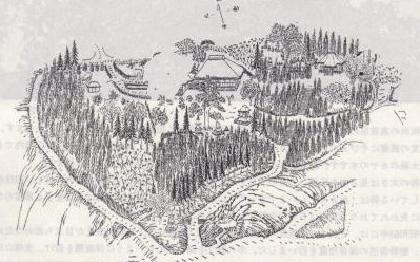Koshouji's Kaya

At Kōshō-ji, an ancient Shingon Buddhist temple in Sakahama, there is a kaya tree designated as a natural monument of Tokyo. This female kaya tree, towering behind the main hall, is about 25 meters tall with a trunk circumference of 6.3 meters at chest height, making it one of the largest kaya trees in Tokyo. According to surveys, it is said to be the 12th largest kaya tree nationwide.
The thickness of the trunk overwhelms viewers and evokes a sense of long history. Although there are some dents, the trunk has a beautiful cylindrical shape and extends straight up to about 8 meters. However, the upper part has been lost due to repeated lightning strikes, and currently, five large branches spread out widely.
In 1988, due to noticeable decline in tree vitality caused by several lightning strikes and track construction work, preservation measures were taken to restore the tree's health. Protective fences were installed to prevent soil compaction around the tree, and supports were placed to protect the main branches. Additionally, decayed areas and dead branches inside the trunk were treated, nutrients were injected, and soil improvement was carried out around the tree. As a result, the tree's vitality is gradually recovering.
The Kaya tree is an evergreen tall tree belonging to the Taxaceae family and the Torreya genus, known for its many uses since ancient times. It is planted as a garden tree or within temple grounds, and is also used as material for construction and sculpture. Additionally, it is well known for its high demand as a material for Go and Shogi boards. The seeds that ripen in autumn are also edible.
The illustration below is an old map depicting Koshouji Temple and its precincts. You can see a large kaya tree towering in front of the main hall, which faces west, opposite to the current orientation. Although the approach path, temple layout, and surrounding scenery have changed significantly, the kaya tree alone retains its original appearance.




Please let us know your feedback on how to make our website better.
Inquiries about this page
Inagi City Local History Museum
1-9-1 Hirao, Inagi City, Tokyo 206-0823
Phone number: 042-331-0660 Fax number: 042-331-0660
Contact the Lifelong Learning Division, Department of Education, Inagi City



















